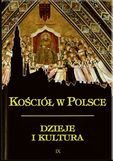
We kindly inform you that, as long as the subject affiliation of our 300.000+ articles is in progress, you might get unsufficient or no results on your third level or second level search. In this case, please broaden your search criteria.

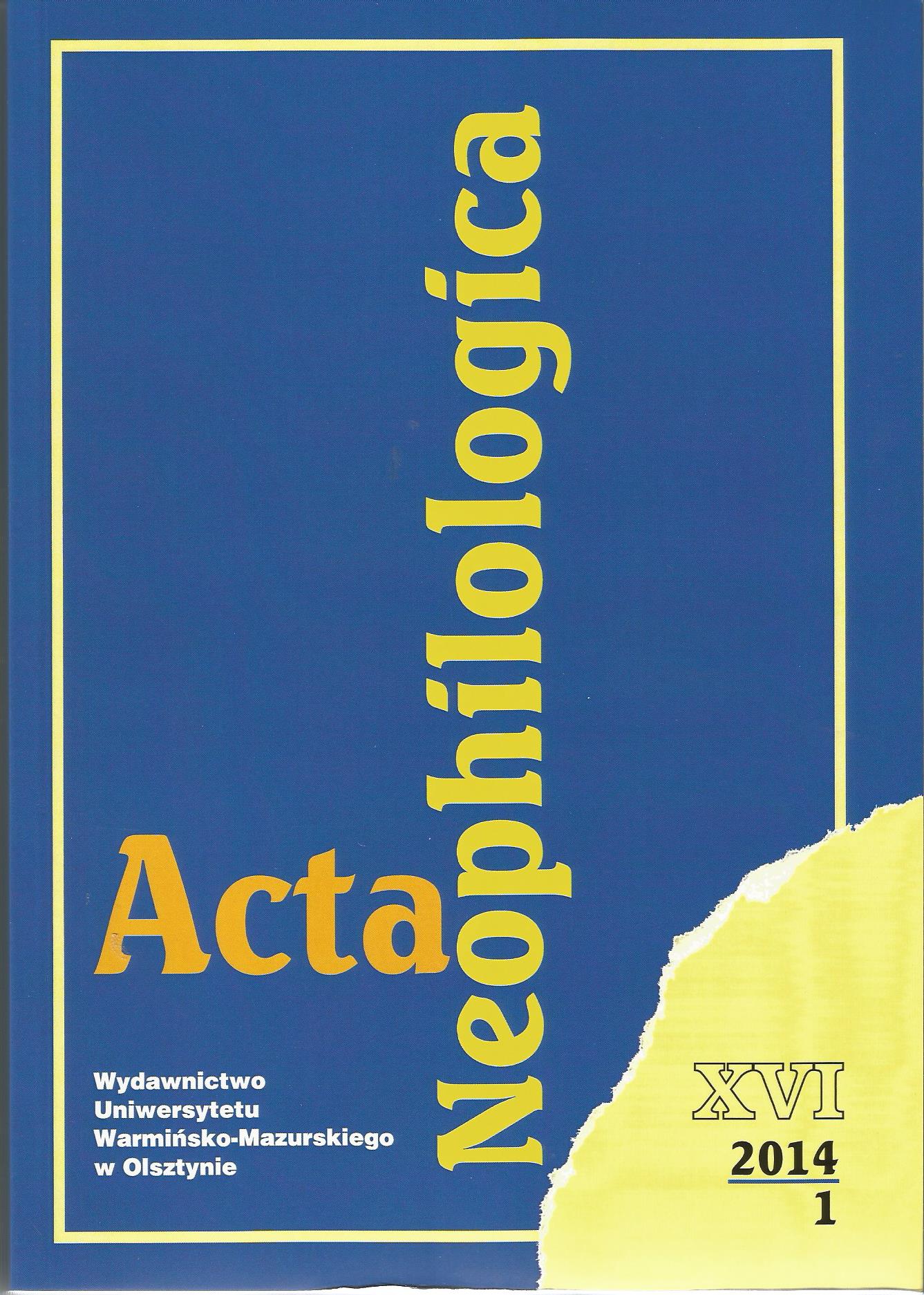
In line with the colonization of central Asian provinces of the Russian Empire, which started inthe 16th century, also the Poles were sent as prisoners to these areas. The article relates to methodsof survival in exile of representatives of the fi rst large group of Polish exiles – members of the BarConfederation (1768–1772). Some chose to more or less spectacular escape, which often ended intragedy. Others settled in and converted to Orthodoxy, denying the possibility of returning home.A large group of exiles were eventually forcibly incorporated into the tsarist army. As ordinary soldiers, deprived of state laws, the Poles have contributed not only to the further colonization of theAsian part of the Russian Empire, but also played an important role in regulating the internal affairsof Russia, including Emilian Pugachev rebellion damping (1773–1774).The source of the research is a diary of exiled member of the Bar Confederation – Karol LubiczChojecki, Pamięć dzieł polskich. Podróż i niepomyślny sukces Polaków, fi rst published in Warsaw in1789, reprinted one year leater (1790) in Supraśl, titled: Polak konfederat przez Moskwę na Syberię zaprowadzony. Razem wiadomość o buncie Puchaczewa.
More...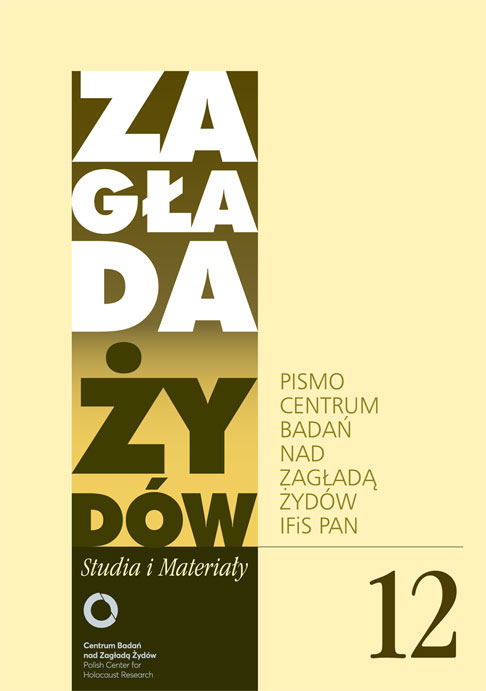
This article analyzes the language used by Jürgen Stroop in his report Es gibt keinen jüdischen Wohnbezirk in Warschau mehr! (English title: The Jewish Quarter of Warsaw Is No More!). Comparing the report on the suppression of the uprising in the Warsaw ghetto with Friedrich Katzmann’s report from the District of Galicia and the reports prepared by Einsatzgruppen, the author juxtaposes the semantic manipulations in the text, which are characteristic of the language in the Third Reich, with the rhetorical structures typical of combat (war) descriptions. Seen from this perspective, Stroop’s report appears to be torn between an execution of the classic report model, which, in its content and form, continues the tradition of Nazi reports about killing, and a military report, which enables Stroop to talk about killing openly, as befits the war convention. The author analyzes both the report’s semantic layer and the photographic material. The context for the analysis is the comparison of Stroop’s language with that of German reports on the uprising of 1944 as well as an overview of the departure from the military model in talking about the uprising in Jewish historiography.
More...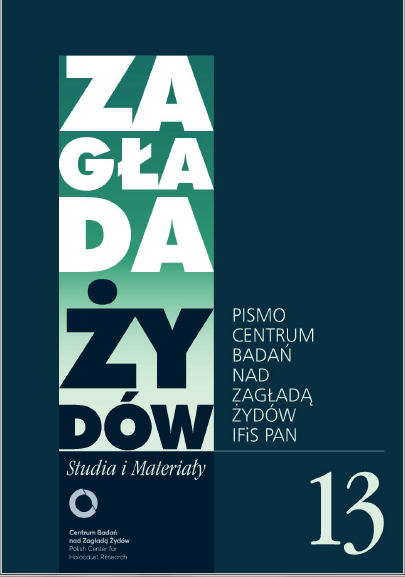
W nocy z 16 na 17 marca 1942 r. o godzinie 22.00 getto w Lublinie zostało otoczone przez SS i formacje pomocnicze1. Na zaciemnionych ulicach włączono oświetlenie. Przedstawiciele Policji Bezpieczeństwa zakomunikowali zebranym pospiesznie członkom Judenratu decyzję o przesiedleniu większości mieszkańców, wyjąwszy posiadaczy wydanych tydzień wcześniej kart pracy. Mieli oni zostać przeniesieni do wydzielonej części getta. Pozostali mieli podlegać deportacji. Wszelkie próby uchylania się od wywózki miały być karane śmiercią. Z miejsca przystąpiono do realizacji tego planu. Oprawcy wdzierali się do mieszkań, wypędzając zdezorientowanych Żydów na ulice. Zastrzelono kilkadziesiąt osób, a 1500 zapędzono na rampę kolejową.
More...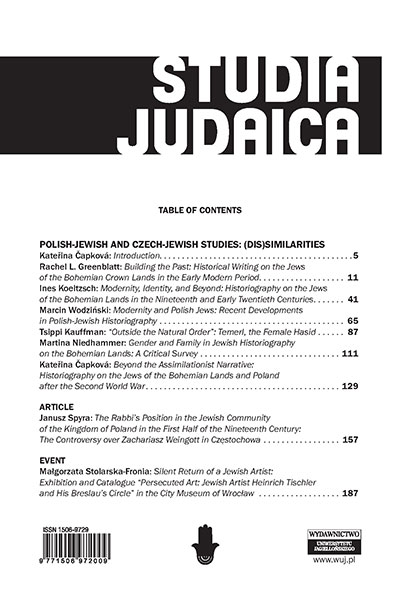
The article examines a possible perception of Franz Werfel’s novel Forty Days of Musa Dagh by Jewish readers in the ghettos during the Second World War. The archival documents from that time as well as postwar testimonies of Holocaust survivors indicate that the novel was popular especially among young people and members of the Jewish resistance movement. People in the ghettos could easily relate to the events described in a book about the Armenian genocide and even identify themselves with Werfel’s characters. The core documents for the analysis are materials from the Underground Archive of the Białystok Ghetto, including the writings of Mordechai Tenenbaum-Tamaroff.
More...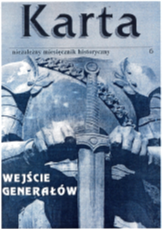
W czwartej „Karcie” przedstawiliśmy w TROPACH — w tekście Alfreda Jasiriskiego „Borysławska apokalipsa” — opis zbiorowego mordu dokonanego na miejscowych komunistach w lipcu 1941 roku, Andrzej Żbikowski przedstawia świadectwa podważające tę wersję wydarzeń.
More...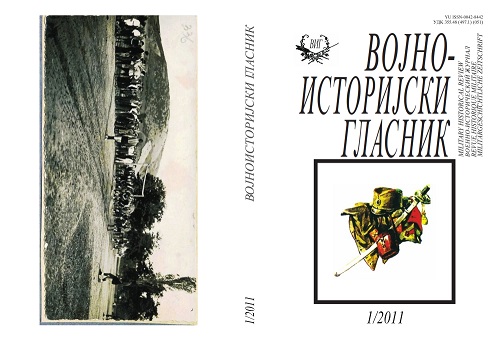
Prikaz/The review of: Martina Grahek Ravančić, Bleiburg i križni put 1945. Historiografija, publicistika i memoarska literatura, Hrvatski institut za povijest, Zagreb, 2009, 486 str.
More...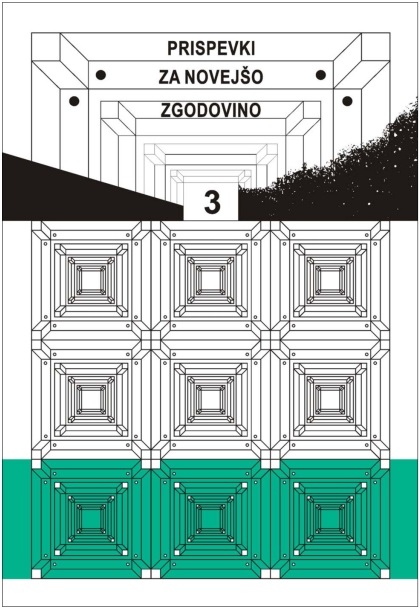
The review of: Ana Jug - Olip, Utihnile so ptice, utihnila je vas : spomini na selske šege in navade, na izselitev v Nemčijo, na taborišče Ravensbrück in na srečno vrnitev domov. Katoliško prosvetno društvo Planina Sele in drugi, Celovec 2011, 178 str., ilustr.
More...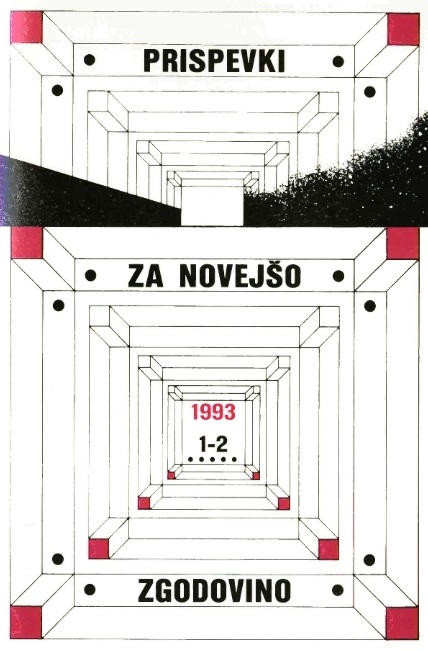
Bibliografija objavljenih del (1945-1982) o Slovencih v okupatorjevih zaporih, ujetniških in koncentracijskih taboriščih ter v evropskem odporniškem gibanju med II. svetovno vojno / A bibliography of published works (1945-1982) on Slovenians in occupying prisons, captive and concentration camps and in the European Resistance Movement during World War II
More...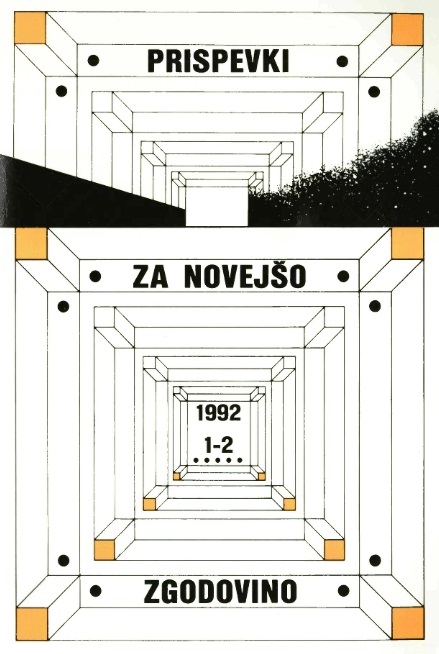
The review of: Marjan Znidarič: Železničarji in železnice v času okupacije in narodnoosvobodilnega boja na Slovenskem Štajerskem. Ljubljana, 1990, 584 strani
More...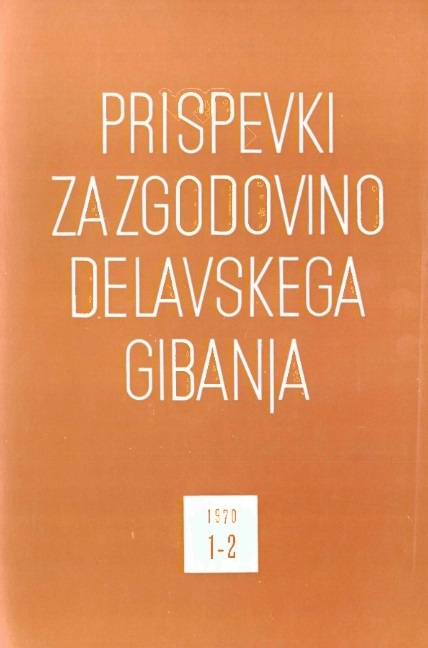
The strong resistance against Fascism on the part of the Slovenes in Primorje came up soon after the World War I owing to the Italian occupation and the resulting severe regime of the Fascist government. This is why the ground for the development of the Liberation Front and the partisan movement was here particularly favourable.
More...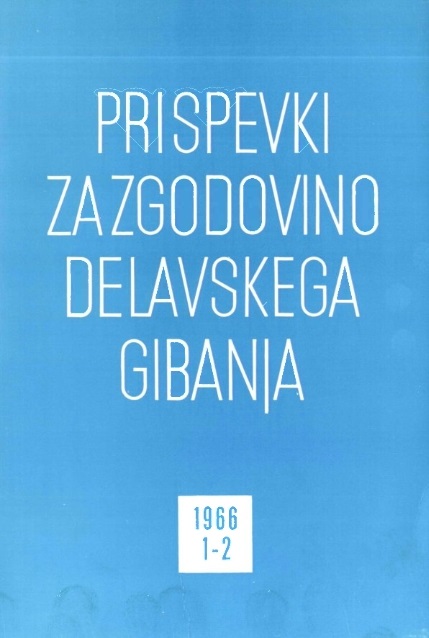
Da bi prišel do sintetične študije o odporniških gibanjih v Evropi, da bi ugotovil skupne in specifične elemente vsakega od njih, sem vzel za izhodišče v tem referatu nekoliko hipotez. Z zbiranjem in preučevanjem zgodovinskega gradiva se bo pokazalo, ali hipoteze, ki jih spodaj navajam, držijo ali ne. [...]
More...
Program znanstvenega posvetovanja o Osvobodilni fronti slovenskega naroda ob njeni petindvajsetletnici predvideva, naj bi moia študija govorila o Osvobodilni fronti in o graditvi ljudske oblasti. Tema je tako široka, da je ni mogoče količkaj zadovoljivo obravnavati v študiji, ki naj ima značaj kratkega koreferata. Iz .te obsežne teme je torej treba izbrati le posamičen problem. Glede na to, da je domala vsa tematika o Osvobodilni fronti in graditvi ljudske oblasti slabo obdelana, sem mnenja, da bi v sistematičnem pogledu najbolj ustrezalo, če bi govoril o idejnih osnovah, ki so v Osvobodilni fronti pomembno vplivale na graditev organov ljudske oblasti. Seveda je tudi idejnih osnov toliko, da se je bilo treba omejiti samo na nekatere in tako je prišlo do razprave, ki se želi ukvarjati z nekaterimi značilnostmi slovenskega narodnoosvobodilnega odpora. Te so obenem v veliki meri njegove posebnosti, ki naj zanimajo znanstvenika, političnega delavca in posebno še pravnika. [...]
More...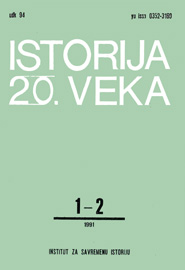
The revolt against German rule, which took place in occupied Serbia in 1941, was dominated both by the bourgeois, legalistic movement, official named Jugoslovenska vojska u otadžbini’ and headed by Colonel Dragoljub Mihailovic, and by the communist NOP, whose nucleus was the Yugoslav Communist Party. The revolt gained intensity in September, compelling the German authorities in Serbia to seek the aid of the Wehrmacht. General Franz Bohme, who consequently arrived in Serbia on September 19th with the assignment of suppressing the revolt, resorted to methods of ruthless reprisal aimed at the civil population. At the same time, conflicts arising between the partisan and the chetnik movements began to surface. The variance was manifested in their opposing views regarding the struggle and in their political differences. Along with the war of liberation, the NOP simultaneously conducted a revolution - a struggle for a ruling position. The chetnik movement would not accept this and in November 1942 civil war broke out in Serbia, considerably weakening the revolt. The differences between the opposing sides were so great that they remained unresolved until the end of the war. The revolt in Serbia was crushed towards the end of November and the beginning of December 1941, with minimal German and great Serbian losses. The operation of quenching the revolt was carried out thoroughly in respect to both the NOP and the chetnik movement of D. Mihailovic.
More...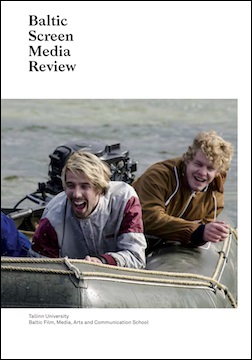
Initially produced in 1968 as a three-part TV miniseries, and restored and re-edited in 2008 as a feature-length film, Dark Windows (Pimedad aknad, Tõnis Kask, Estonia) explores interpersonal relations and everyday life in September 1944, during the last days of Estonia’s occupation by Nazi Germany. The story focuses on two young women and the struggles they face in making moral choices and falling in love with righteous men. The one who slips up and falls in love with a Nazi is condemned and made to feel responsible for the national decay. This article explores how the category of gender becomes a marker in the way the film reconstructs and reconstitutes the images of ‘us’ and ‘them’. The article also discusses the re-appropriation process and analyses how re-editing relates to remembering of not only the filmmaking process and the wartime occupation, but also the Estonian women and how the ones who ‘slipped up’ are later reintegrated into the national narrative. Ultimately, the article seeks to understand how this film from the Soviet era is remembered as it becomes a part of Estonian national filmography.
More...
The article argues that Wojtek Smarzowski’s film Rose (Róża, Poland, 2011) undermines the dominant bigendered logic of screen death and suffering in the Polish films depicting the experience of World War II. In these films, there is a significant absence of images of female suffering and death, which is striking when compared to the abundant images of wounded and dying male bodies, usually represented as a lavish visual spectacle. This unrepresented female death serves as a ‘structuring absence’ that governs the systematic signifying practices of Polish cinema. Most importantly, it expels the female experience of World War II from the realm of history to the realm of the mythical. This representational regime has been established in the Polish national cinema during the 1950s, especially in Andrzej Wajda’s films, and is still proving its longevity. As the author argues, Smarzowski’s Rose is perhaps the most significant attempt to undermine this gendered cinematic discourse. Specifically, the essay explores the ways in which Smarzowski’s Rose departs from previous dominant modes of representation of the World War II experience in Polish cinema, especially its gendered aspect. Firstly, it examines how Rose abandons the generic conventions of both war film and historical drama and instead, utilises selected conventions of melodrama to open up the textual space in which to represent the female experience of historical events. Then the author looks more closely at this experience and discusses the film’s representation of the suffering female body to argue that it subverts the national narrative of the war experience that privileges male suffering. A close analysis of the relationship between sound and image in the scenes of bodily violence reveals how the film reclaims the female body from the abstract domain of national allegory and returns it to the realm of individual embodied experience. The article concludes that Rose presents the female body as resisting the singular ideological inscription, and instead, portrays it as simultaneously submitting to and resisting the gendered violence of war.
More...
This article is devoted to the theme of women and war in the films of Jānis Streičs, possibly the most influential Latvian film director. In the course of his career, which spanned nearly 50 years, Streičs made films that were popular in Latvia, as well as throughout the Soviet Union. He is one of the few Latvian film directors who managed to continue a comparatively stable career in the newly reindependent Republic of Latvia. Streičs skilfully used the canonised means of expression of classical cinema and superficially fulfilled the demands of socialist realism to provide appealing and life-asserting narratives for the audiences. Being a full-time film director at Riga Film Studio, and gradually becoming a master of the studio system, Jānis Streičs managed to subordinate the system to his own needs, outgrowing it and becoming an auteur with an idiosyncratic style and consistently developed topics. The most expressive elements of his visual style can be found in his war films, which are presented as women’s reflections on war. In this article, Streičs’ oeuvre in its entirety provides the background for an analysis of two of his innovative war films. Meetings on the Milky Way (Tikšanās uz Piena ceļa, Latvia, 1985) rejects the classical narrative structure, instead offering fragmentary war episodes that were united by two elements – the road and women. In Carmen Horrendum (Latvia, 1989) Streičs uses an even more complicated structure that combines reality, visions and dreams. After watching this film, the only conclusion we can come to with certainty is that war does not have a woman’s face and, in general, war has no traces of humanity. The aim of this article is to demonstrate how World War II, a theme stringently controlled by Soviet ideology, provided the impetus for a search for an innovative film language.
More...
The article deals with the extradition of Baltic soldiers from Sweden in 1946 as represented in Per Olov Enquist’s novel The Legionnaires: A Documentary Novel (Legionärerna. En roman om baltutlämningen, 1968) and Johan Bergenstråhle’s film A Baltic Tragedy (Baltutlämningen. En film om ett politiskt beslut Sverige 1945, Sweden, 1970). The theoretical framework is taken from trauma studies and its equivalent within film studies, where trauma is seen as a repeated occurrence of a past event. In this regard, literature and moving images become the means of reaching the traumatic event, a way to relive it. What separates the extradition of the Baltic soldiers from other traumas, such as the Holocaust, is that it functions as a guilt complex related to the failure to prevent the tragedy, which is connected to Sweden’s position of neutrality during World War II and the appeasement of all the warring nations. It is argued that this is a collective trauma created by Enquist’s novel, which blew it into national proportions. However, Bergenstråhle’s film changes the focus of the trauma by downplaying the bad conscience of the Swedes. In this way, the film aims to create new witnesses to the extradition affair. The analysis looks at the reception of both the novel and film in order to explain the two different approaches to the historical event, as well as the two different time periods in which they were produced. The authors argue that the two years that separate the appearance of the novel and the film explain the swing undergone by the political mood of the late 1960s towards a deflated revolution of the early 1970s, when the film arrived on screens nationwide. However, in terms of creating witnesses to the traumatic event, the book and film manage to stir public opinion to the extent that the trauma changes from being slowly effacing to being collectively ‘experienced’ through remembrance. The paradox is that, while the novel still functions as a vivid reminder of the painful aftermath caused by Swedish neutrality during World War II, the film is almost completely forgotten today. The film’s mode of attacking the viewers with an I-witness account, the juxtaposition and misconduct led to a rejection of the narrative by Swedish audiences.
More...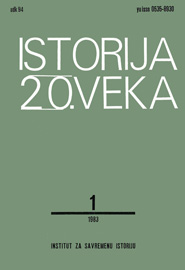
На основании соответствующей литературы, а прежде всего использования неопубликованной немецкой дипломатической и военной документации, автор осветляет один специфический элемент немецкой политики в юго-восточной Европе перед окончанием Второй мировой войны, рассматривая его в связи в общей политикой Германии на этой территории после капитуляции Италии. После свержения Муссолини Германия предвидела, что Италия вскоре будет выброшена из войны как партнер Оси и поэтому приняла необходимые меры для оккупации тех территорий на Балканах, которые ранее находились под контролем итальянских войск. При этом, албанская часть адриатического побережья получила особенно важное стратегическое значение, так как предполагалась реальная возможность высадки англо-американских войск на этой территории. Чтобы облегчила положение своих войск, перед которыми была поставлена задача защиты албанского побережья и обеспечения содействия националистических великоалбанских сил в борьбе против народноосвободительного движения, Германия решила выступить в качестве „освободителя" Албании от итальянской власти, обновляя ее „независимость". Было решено так же не менять границ, установленных в 1941 году, т. е. признать существование „Великой Албании". Поэтому после вхождения немецких войск на территорию „Великой Албании", вместо установления оккупационной системы, был назначен немецкий уполномоченный генерал в Албании. Было сформировано Намесничество из трех членов под председательством Мехди Фрайшерия и правительство во главе с Реджепом Митровисем. Немецкие разведывательные органы выбирали, пользуясь при этом и коррупцией, известных антикоммунистов, не скомпромитировавшихся сотрудничеством с Италией. Большая часть членов правительства ранее училась в Германии или в Австрии и готова была беспрекословно служить интересам Третьего Рейха. Самой верной опорой немецких оккупационных войск был Джафер Дева, получивший рессор министра внутренних дел, еще с 1941 года верный сотрудник немецких оккупантов в Митровичской области. „Великой Албании" немцы признали „относительную нейтральность", согласившись не включать ее силы в борьбу против регулярных военных формаций противников Германии, но этот „суверенитет" был так же относительным. При этом Sonderbevollmachtigter des Auswartigen Amtes на Юго-востоке дал на знание, что Германия не потерпит ни одного правительства, которое бы проводило политику, противречащюю немецким интересам. Особое внимание автор уделяет связям немецких военных и разведывательных органов с реакционными великоалбанскими силами, из которых формировались квислингские полицейские и военные формации, а между ними силы Балли Комбетара в Албании, СС дивизия „Скандербег" и два полицейских полка под командованием Джафера Девы на Косове. Кроме того, были организованы и вооружены единицы армии и жандармерии тиранского квислиншского правительства. Все ети силы под командованием немецких офицеров использовались в борьбе против народно-освободительного движения. Когда немецкие войска осенью 1944 года начали одступать из Албании, потерпел крах весь квислингшский политический и военный аппарат. Тогда с помощью немецких военных и разведывательных органов больше число видных немецких коллаборационистов побегло из Албании. В начале они находились в Вене, а затем были переброшены в Коцбихел, откуда накануне вхождения союзных армий в Австрию перешли в Швейцарию.
More...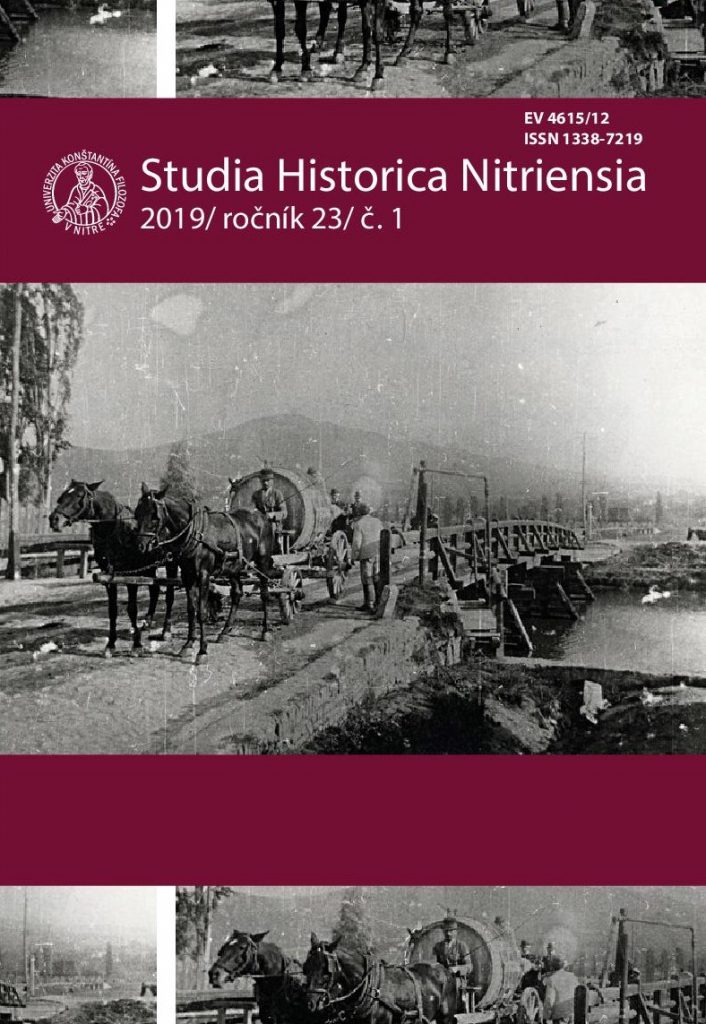
The article describes a largely unknown Swedish effort to intervene in deportations of Jews in Slovakia between 1942 and 1944. Swedish officials and religious leaders used their diplomatic correspondence with the Slovak government to extract some Jewish individuals and later on the whole Jewish community of Slovakia from deportations by their government and eventually by German officials. Despite the efforts of Swedish Royal Consulate in Bratislava, the Swedish Archbishop Erling Eidem, and the Slovak Consul Bohumil Pissko in Stockholm, and despite the acts taken by some Slovak ministries, the Slovak officials including the President of Slovak republic Jozef Tiso revoked further negotiations in autumn 1944. However, the negotiations between Slovakia and Sweden created a scope of actions to protect some Jewish individuals which were doomed to failure due to the political situation. Nevertheless, this plan and the previous diplomatic interventions are significant to describe the almost unknown Swedish and Slovak efforts to save the Jews of Slovakia. Repeated Swedish offers to take in Jewish individuals and later the whole community would have likely prepared the way for larger rescues. These never occurred due to the Slovak interest in deporting its own Jewish citizens and later due to the German occupation of Slovakia.
More...